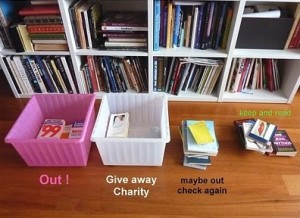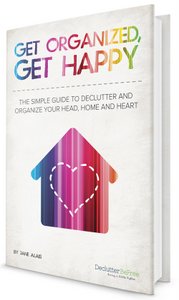Discover Your Trash or Treasure
Decluttering Your Home helps you to discover Your Trash or Treasure
You may find as you declutter your home that it is really about new perspectives.
 Identify your clutter by asking what is treasure or trash to you.
Identify your clutter by asking what is treasure or trash to you.
Clutter can have a life force of it’s own and can quickly morph into bigger piles and accumulate in unexpected places.
Depending on how many possessions you have, taking action to eliminate clutter can be a process of working through years of redundant stuff . Without a plan and the clutter free keys this can be difficult.
That is why unwanted redundant stuff gets stored or kept for years taking up space, eating up your time and energy and costing your money.
DISCOVER YOUR LONG-LOST TREASURES
At every level of clutter you will rediscover long-lost treasures.
As you declutter your home and the process unfolds, clearing away the junk and cobwebs often leads you to forgotten talents and exciting revelations.
Anyone who seriously begins the process of reducing clutter is choosing a creative life path.
Not only are you physically decluttering your home, you are mentally clearing layers to find inspiration, creativity, contentment and purpose as you identify and eliminate clutter to organize what you love to own and use .
THE BIG CLUTTER QUESTION
The big question in this decluttering process is what you personally define as trash and what you consider treasure.
This can be different for everyone and is why every clutter free journey is an individualized process.
Trash is the stuff that creates work, makes functioning in your home difficult and has a negative energy because it doesn’t make life easier or better.
Treasure is all your possessions that make life easier, add quality to your home life and are a joy to look at and use.
This may mean a radical shift in the way you perceive your environment and your possessions but this shift can make decluttering your home much easier.
Plus different levels of clutter require different time frames, decluttering methods and removal strategies. With the right information and tools it is easy to do.
Identifying what type of clutter you want to clear will give you the tools to clear it effectively and quickly so you can get into a better balance with your life and possessions.
THE 5 LEVELS OF CLUTTER YOU MUST KNOW ABOUT
Clutter is different. Some stuff is easy to throw out and other stuff is sticky and difficult. Knowing what level of clutter you are dealing with can give you the key to making a foolproof to let it go.
This knowledge makes it easier to excavate longterm clutter from its home.
1 SURFACE CLUTTER
This type of clutter gets thrown on all flat surfaces such as tables, counter tops and floors. It is the stuff that you trip over and dump in piles. It usually doesn’t have a home or indicates that drawers, closets and storage spaces or too full so it isn’t easy to put away. It is also all those things that don’t get put away and float around your house.This clutter makes your home look disorganized and messy and creates a negative mindset because it is difficult to find a place to put away.
2 SUPERFICIAL CLUTTER
Superficial clutter is all the stuff you need but have too much of. It is the doubles and multiples of same things you haven’t faced. It makes your home feel crowded and stuffed as every storage space is bursting at the seams. It makes a clutter problem because there is too much to put away and when it is your can’t see it because the storage space is too full.
Reducing this clutter creates significant shifts in how you function and feel in your home.
3 SMALL CLUTTER
As you declutter your home you will discover the third type of clutter is small clutter. This is all the small bits and pieces inside of cupboards and drawers and scattered over shelves and windowsills. It disappears and reappears on a daily basis and gets everyone on edge as small things can never be found when you desperately need them. Misplacing keys, glasses, homework, receipts, phone numbers are all part of this problem.
4 DEEP CLUTTER
The fourth layer of clutter is deep clutter. This is the problem clutter that is hard to let go of. Often you hang on to it with the clutter excuses and can often feel overwelming.
This is long-term unused stuff that invisibly blends into the scrambled mix of possessions in the backs of closets and drawers. It’s this clutter that makes decision making a nightmare while it takes up space, drains your energy and eats up your time even if you are unaware of it. Deep clutter is what makes decluttering your house difficult and is where most people give up. Holding on to this clutter takes up a lot of space and energy.
5 HIDDEN CLUTTER
The final category of clutter is hidden clutter. This includes everything you have packed in boxes and stored away.
Look for furniture in the garage, wedding gifts, memorabilia, and excess clothes.
Usually you look at it once a year, say “oh”, close the lid and put it away again. This stuff can be found in attics, basements and garages, but I have seen it in closets, kitchens, under beds, and behind doors. It’s all the excess that is never appreciated, valued or used and is packed away and over time becomes a burden to keep.
Identifying the level and type of clutter you want to clear while keeping a lookout for those long lost treasures gives you the information you need to make an effective plan.
The clutter excuses fade away so you can declutter and organize your home and your life giving you direction, focus and achievement.


Want to join the discussion?
Feel free to contribute!